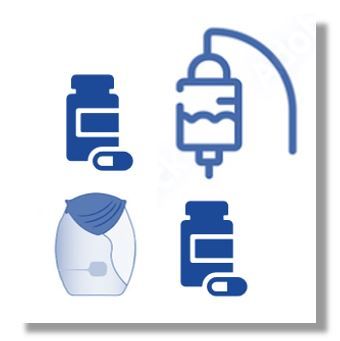
- Clinical Technology
- Adult Immunization
- Hepatology
- Pediatric Immunization
- Screening
- Psychiatry
- Allergy
- Women's Health
- Cardiology
- Pediatrics
- Dermatology
- Endocrinology
- Pain Management
- Gastroenterology
- Infectious Disease
- Obesity Medicine
- Rheumatology
- Nephrology
- Neurology
- Pulmonology
Influenza Rx in Practice: Which Antiviral Makes Sense?

A healthy schoolteacher aged 30 years presents to you with a 24-hour history of fever to 102°F, cough, and runny nose, but no body aches. You are seeing some sporadic cases of flu in your office, so you elect to test her, and she comes back positive for influenza B.
You tell her she is not in a high-risk category, but you could prescribe antiviral treatment that will shorten her course of illness. She would like to be treated. You have 4 choices.
1. IV peramivir (Rapivib) is simply impractical in an office setting and offers no significant benefit over the others.
2. The inhaled powder zanamivir (Relenza) is a second option. It uses a Diskhaler which is less susceptible to improper inhalation as compared to an MDI. It is not approved for use in anyone with asthma or COPD which limits its use in 2 large, high-risk populations. No generic is available so it is likely to be a little pricey. Most patients would prefer a pill over a potentially mildly irritating inhaled powder.
3. Oseltamivir (Tamiflu) is available as a generic so would likely be the best option for someone without pharmacy insurance. It comes as pill or suspension which is a nice option to have with your younger pediatric patients.
4. Baloxavir (Xofluza), the most recent addition to antiviral choices against influenza, is a fourth option.
Which of the following statements about baloxavir is NOT true when compared to oseltamivir?
So which drug do you recommend, generic Tamiflu or brand name Xofluza?
While the 2 antivirals are equally as effective baloxavir is easier to take. The GI side effects with Tamiflu can be reduced if it is taken with food.
What about cost?
What we haven't talked about is price. Tamiflu's generic option for a cash pay patient runs about $21 for 10 pills where I practice in Raleigh, NC, according to GoodRx. Xofluza would cost $160 for the single pill. Currently, the manufacturer has a coupon reducing cost by up to $60 which would bring the price down to about $100. Of course, if the patient has private insurance the cost would likely be less, but nearly always more expensive than generic Tamiflu.
Real-world example
When I looked at 3 random patients in my EMR, each with a different private payor, the patient out-of-pocket cost using the Xofluza coupon worth a $60 discount resulted in 1 patient paying $5 less for Xofluza vs oseltamivir and the other 2 patients paying $30 and $22 more for Xofluza. If your patient population is like mine, I suspect I will have some that prefer what is cheapest and some that would be happy to pay an extra $20-$30 for the convenience of taking 1 pill 1 time vs 10 pills over 5 days. I plan to explain the options to them and let them choose. Your patients will appreciate understanding their options.
2 Commerce Drive
Cranbury, NJ 08512
All rights reserved.